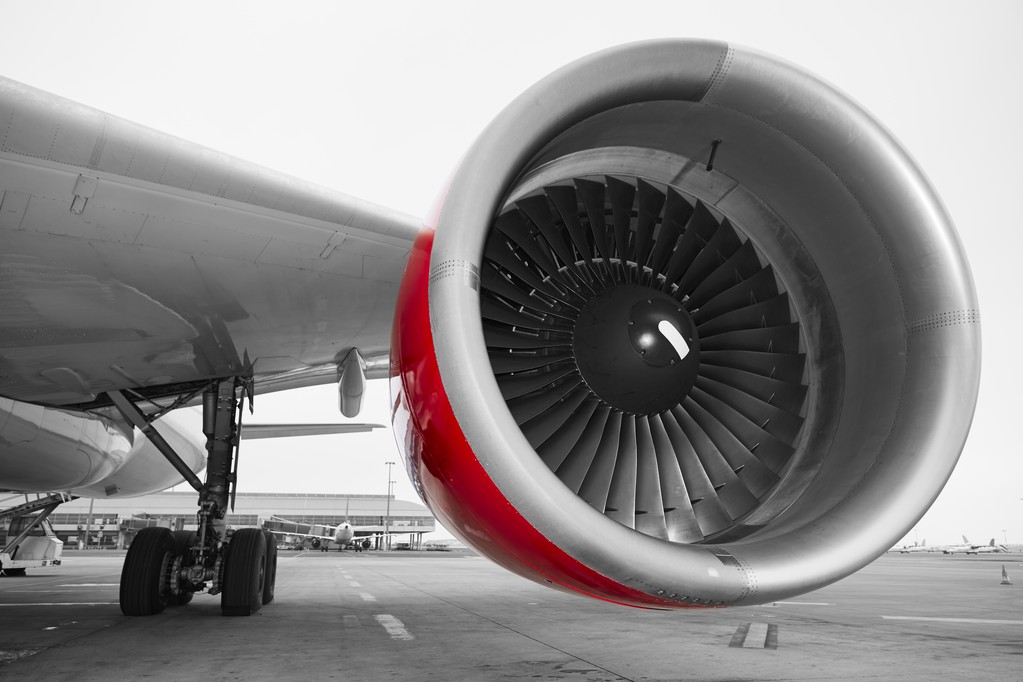Application Of Titanium Alloy In Aviation Engine
Time:2022-02-09
View:137
Application Of Titanium Alloy In Aviation Engine
The aero engine is called the heart of the aircraft, it is also the source of power for the aircraft. An important performance indicator of aero engines is the thrust-weight ratio, which is the ratio of the thrust generated by the engine to its own mass. A significant increase in the thrust-weight ratio will lead to the generation of a new generation of engines. There are two ways to increase the thrust-weight ratio of the engine. One is to increase the thrust of the engine, and the other is to reduce the weight of the engine. To make the engine weight lighter, it is necessary to develop and use lighter materials. The working environment of aero engines is relatively special, and they need to face various conditions of high temperature, high pressure, and even high-strength shocks. Not all lightweight materials can be used.

With the continuous development of science and technology, new materials have sprung up, and some cutting-edge materials have been applied to the rapidly developing aviation manufacturing industry. Titanium alloy has outstanding characteristics, such as high specific strength, wide operating temperature range and excellent corrosion resistance. As a new structural material, it has replaced aluminum alloy, magnesium alloy and steel in the application of aviation engines. About 20% to 35% of the structural quality of modern gas turbine engines is #titanium alloy. Except for nickel-based superalloys, titanium alloy is an excellent engine material. As early at the beginning of 1950s, titanium alloy was used in early jet engines produced by Pratt & Whitney in the United States and Rolls-Royce in the United Kingdom. From that time, the amount of titanium alloy used in the field of aviation engines has increased steadily. With its good strength, plasticity, toughness, denaturation and fatigue properties, titanium alloy is widely used in aerospace structural parts with complex structures and severe stress conditions, for example, the aircraft engine compressor blades, aircraft surface skins, engine casings and other parts.
The aviation industry has always been a huge user of the titanium alloy market, so the development of the aviation industry has played a vital role in the research, production and application of titanium alloys. Similarly, an important criterion for evalue the development level of a country's aviation industry is the percentage of titanium used in aviation. With the continuous development of our country's national economy and the launch of large aircraft and engine plans, advanced large aircraft and their engines have put forward extremely high requirements for high efficiency, high performance, low cost and low pollution, which has also provided a strong driving force for the development of advanced aviation titanium alloy materials and thermal processes.
The earliest and most classic representative of titanium alloy is Ti-6Al-4V, which is designed to have a max operating temperature of 350℃. Since this material not only has high temperature resistance, but also has very excellent plastic processing properties, Ti-6Al-4V has been widely used once it was discovered. 6Al-4V is widely used. Compressor blades were the earliest titanium alloy engine components, and later titanium alloy compressor discs appeared. The large front-end fan blades of modern jet engines are also made of titanium alloy. Since the fan blades and compressor discs are used at low temperatures, they are often made of Ti-6Al-4V alloy. The high-pressure compressor part adopts near-α-type high-temperature titanium alloy. The max operating temperature of the near-α-type high-temperature titanium alloy is about 540℃, which can fully meet the requirements of high-pressure compressors. However, when used as rotating parts, titanium alloys have a tendency to be flammable, and severe friction and impact are the main causes of titanium fire. Titanium alloy is a bad conductor of heat. The heat generated by friction and impact is difficult to be lost in a short period of time, and a sudden rise in temperature can cause a titanium fire. In view of the flammable problem of titanium alloy parts in aviation engines, adding an anti-titanium fire coating to the surface of titanium alloy parts can effectively reduce the probability of titanium fire in the engine, and it is the most widely used anti-titanium fire solution. The research and development and use of flame-retardant titanium alloys are expected to fundamentally solve the problem that titanium alloys are prone to fire and combustion. Pratt&Whitney has developed a high-stability flame-retardant β-type alloy called Alloy C (Ti-35V-15Cr), which is now used in components such as compressor baffles, superchargers, and nozzles for F119 engines of F-22 fighter jets. However, the flame-retardant titanium alloy contains a large amount of precious metal element V, which leads to a higher cost and limits its application prospects.



